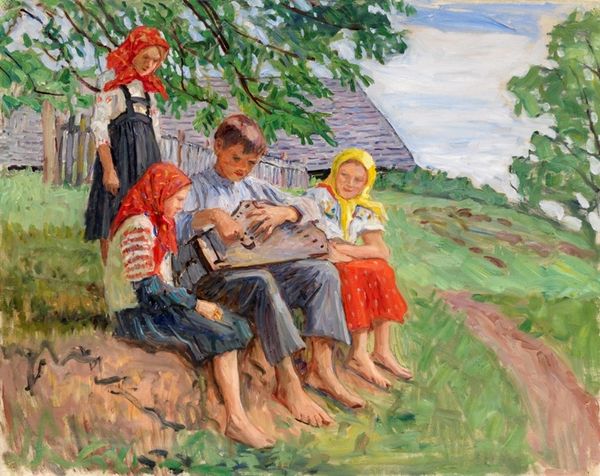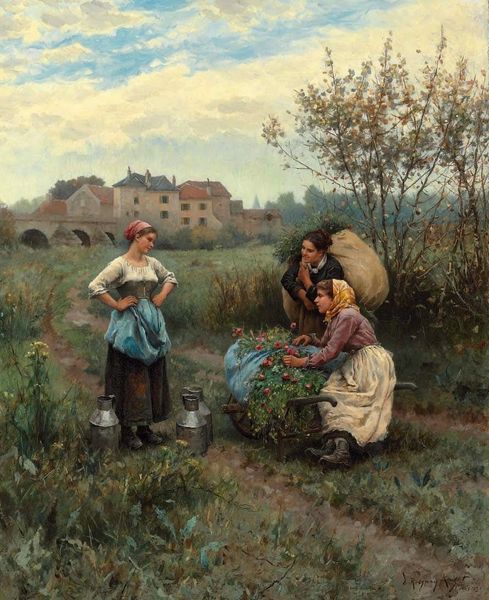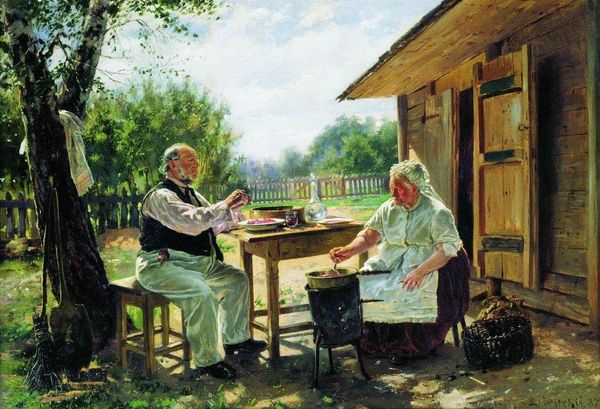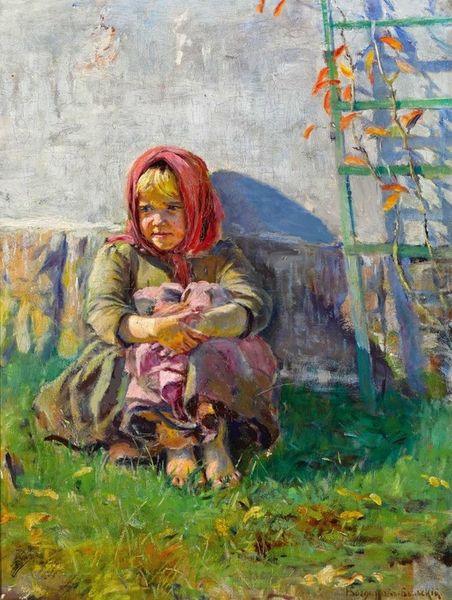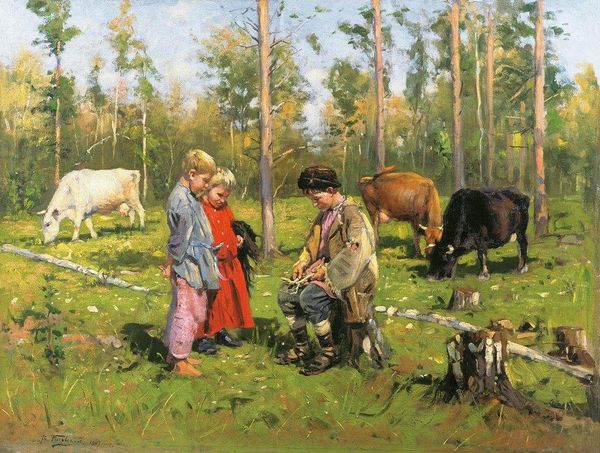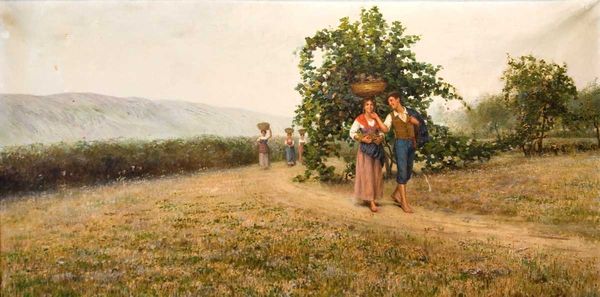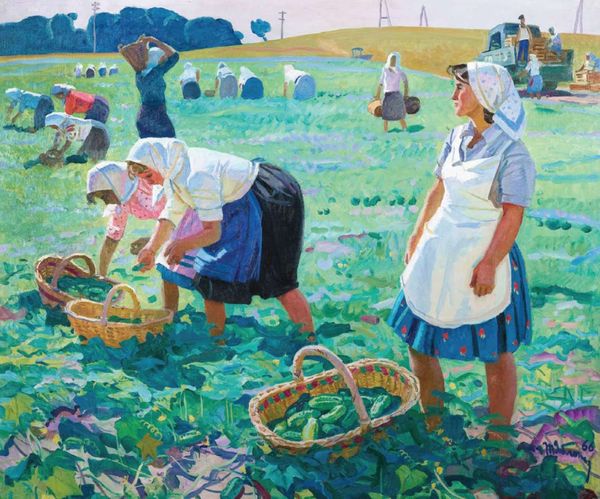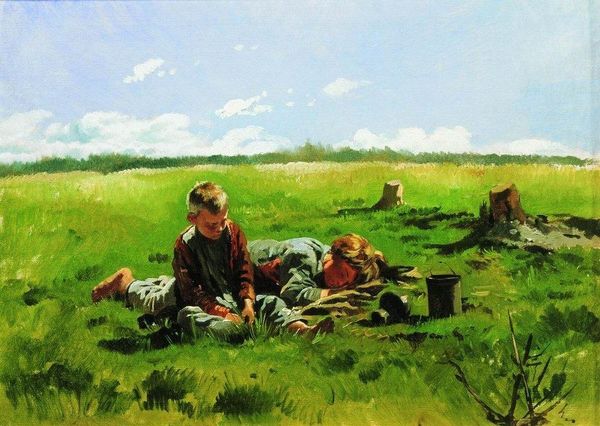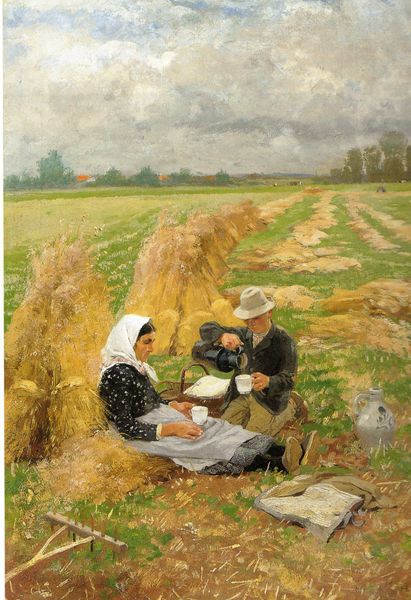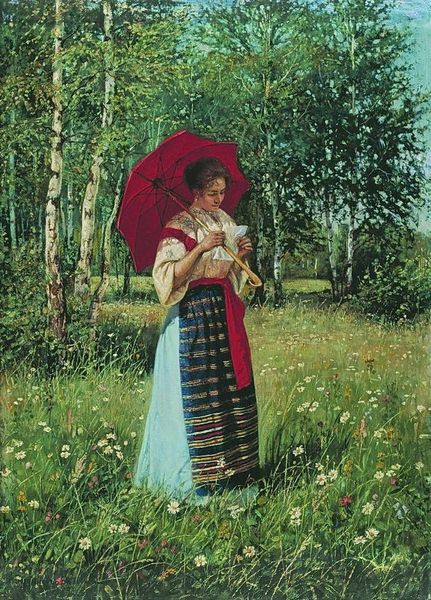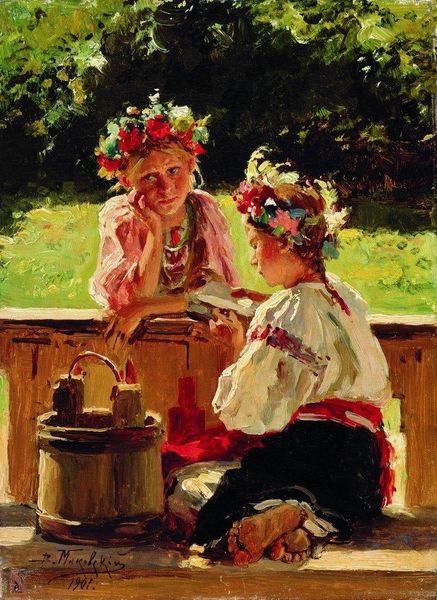
#
tree
#
impressionist landscape
#
oil painting
#
fluid art
#
acrylic on canvas
#
forest
#
animal portrait
#
naive art
#
animal drawing portrait
#
facial portrait
#
nature
#
portrait art
#
fine art portrait
Dimensions: 110 x 135 cm
Copyright: Public domain
Editor: This is "Little Concert with Balalaika" by Nikolay Bogdanov-Belsky, painted in 1937. It’s an oil painting of children in a field, and what strikes me is how intimate and unposed the scene feels, especially considering the date. What's your interpretation? Curator: Bogdanov-Belsky was known for painting peasant children, often in idealized scenes of rural life. But your point about the date is crucial. Consider the context: 1937 was a dark year in Stalinist Russia, the height of the Great Purge. Art was strictly controlled, expected to be socialist realism, glorifying the state and the collective. Editor: So, how does this fit in? It seems quite apolitical. Curator: Exactly. That’s the interesting tension. On the one hand, it fits the Soviet narrative by depicting the idealized simplicity of rural life, suggesting a harmonious image of Russia, especially to foreign audiences. But, it also subtly evades direct political messaging. The focus on the children and their music allows for a degree of artistic freedom not found in overtly propagandistic works. Notice how their bare feet and simple clothing romanticize an older way of life. Editor: I see, it’s performing a role in promoting a national identity without directly praising Stalin. Did it face any criticism for not being explicitly socialist? Curator: That's difficult to know for certain without archival evidence. It likely walked a tightrope, celebrated for its painterly skill while potentially questioned for its lack of revolutionary zeal. We need to consider how art institutions shaped its display and reception in the context of the late 1930s. Editor: This makes me see the painting in a totally new light. Thanks. Curator: My pleasure. It highlights the critical role context plays in our understanding of art, particularly when political forces are at play.
Comments
No comments
Be the first to comment and join the conversation on the ultimate creative platform.
